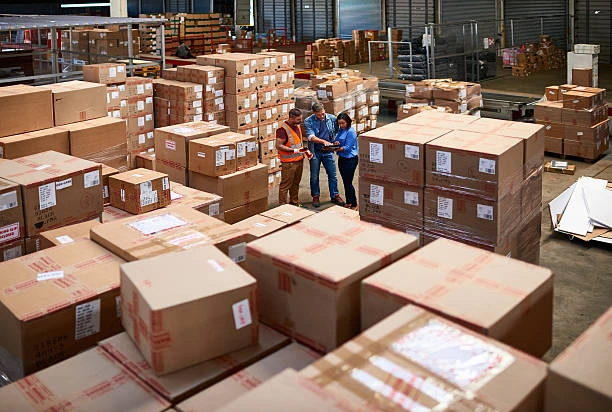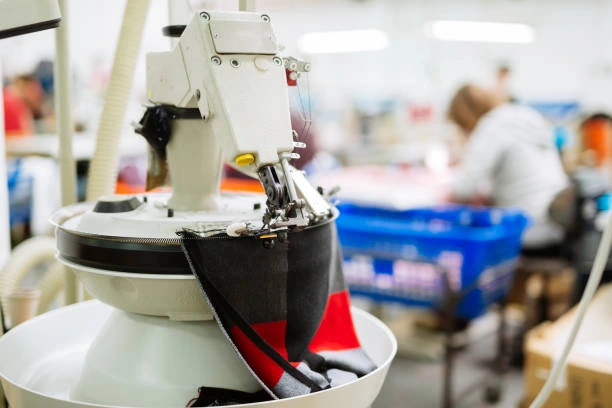Benefits of ERP in the Fashion Industry: Streamlining Operations
In the fast-paced fashion world, where trends change in the blink of an eye, behind-the-scenes operations play a crucial role in keeping the runway lights shining bright. Enter Enterprise Resource Planning (ERP), a technological ally transforming how fashion brands weave their success stories. In this article, we will look at the benefits of ERP in the fashion industry and how it’s streamlining manufacturing operations.
We will also discuss other areas that ERP benefits, such as customer experience, cost saving, and scalability. You will also learn about the challenges of using an ERP and where it will go.
Streamlined Operations
Centralized data management
Having a centralized data management system is invaluable in the intricate web of fashion, where every design and detail matters. ERP allows fashion businesses to store and manage data in one accessible location, reducing errors and ensuring consistency across departments.
Inventory control and optimization
Juggling inventory is a constant puzzle for fashion brands. Enter ERP systems, the digital wizards that unveil real-time views into stock levels. They’re like a fashion GPS, guiding businesses to optimize stock, cut down on excess, and steer clear of those dreaded stockouts.
Supply chain efficiency

From design to delivery, the fashion supply chain involves numerous stages. ERP streamlines these processes, facilitating better supplier, manufacturer, and distributor coordination. This results in a more responsive and efficient supply chain.
One of the key players in this transformative journey is Posh Garments, a forward-thinking fashion brand that has harnessed the power of ERP to weave its success story. By embracing ERP, Posh Garments has experienced a myriad of benefits that extend across various facets of its operations.
Enhanced Collaboration
Communication across departments
Effective communication is the backbone of successful fashion enterprises. ERP breaks down communication barriers by providing a platform where teams can collaborate seamlessly. Whether sharing design concepts or coordinating production schedules, ERP enhances cross-departmental communication.
Real-time collaboration features
Fashion is an industry where timing is everything. ERP systems enable real-time collaboration, allowing teams to work simultaneously on projects, share updates instantly, and respond promptly to market trends and consumer demands.
Improved Customer Experience
Personalization capabilities
Think of ERP as the personal stylist for fashion brands in the age of customized experiences. It’s the tool that lets brands tailor their offerings to match your unique taste, making your fashion journey as unique as you are. Businesses can create personalized recommendations, promotions, and shopping experiences by analyzing customer data.
Order fulfillment efficiency

ERP optimizes order processing and fulfillment, ensuring timely delivery to customers. The ability to track orders in real-time enhances transparency, builds customer trust, and contributes to overall satisfaction.
Customer service enhancements
Fashion brands leveraging ERP systems can enhance customer service by accessing a centralized customer information database. This allows for quicker issue resolution, personalized communication, and a more customer-centric approach.
Data-Driven Decision Making
Analytics and reporting tools
ERP systems provide robust analytics and reporting tools that empower fashion businesses to make data-driven decisions. These insights enable informed strategies and proactive responses to market changes, from sales trends to production efficiency.
Forecasting and trend analysis
Fashion is inherently trend-driven, and ERP systems help businesses stay ahead of the curve. By analyzing historical data and market trends, ERP aids in forecasting, allowing companies to align production with anticipated consumer demand.
Cost Savings
Reduced operational costs
Making things work smoothly doesn’t just save time; it also saves money. Imagine ERP systems as your helpful sidekick, doing the routine stuff automatically, avoiding mistakes, and cutting down on the need for manual work. This superhero act translates into significant savings over time.
Efficient resource allocation
By optimizing resource allocation, ERP ensures that fashion businesses effectively allocate their workforce, materials, and production capacities. This efficiency directly contributes to cost savings and improved profitability.
Scalability
Adapting to industry changes
The fashion industry is volatile, with trends and market demands changing rapidly. ERP systems are designed to be scalable, allowing businesses to adapt to industry changes without compromising efficiency or productivity.
Facilitating business growth
As fashion businesses expand, so do their operational needs. ERP systems provide a scalable infrastructure that can grow with the business, accommodating increased data volume, users, and business complexities.
Regulatory Compliance
Meeting industry standards
Compliance with industry standards and regulations is paramount in the fashion industry. Enterprise Resource Planning (ERP) systems are like rule-following assistants for businesses. They give companies tools to keep track of and handle processes related to following standards.
Ensuring legal compliance
In addition to industry standards, fashion brands must navigate complex legal requirements. ERP systems assist in ensuring legal compliance, from intellectual property rights to labor laws, reducing the risk of legal issues.
Challenges and Solutions
Common challenges in ERP adoption
While the benefits of ERP are significant, adoption comes with its challenges. Identifying and addressing common issues, such as resistance to change and data migration concerns, is crucial for a smooth transition.
Strategies to overcome obstacles
ERP implementation is a strategic process that requires careful planning. Highlighting effective strategies to overcome challenges ensures businesses can maximize ERP’s benefits without significant disruptions.
Future Trends

Technological advancements in ERP
The landscape of ERP is continually evolving, with ongoing technological advancements shaping the future of these systems. Exploring upcoming trends, such as artificial intelligence integration and enhanced automation, offers a glimpse into the future of ERP in the fashion industry.
Anticipated developments in the fashion industry
As fashion and technology converge, the industry is poised for exciting developments. Examining how these anticipated changes align with ERP capabilities provides valuable insights for fashion businesses preparing for the future.
Considerations for Implementation
Selecting the right ERP solution
Choosing the right ERP solution is a critical decision for fashion businesses. Scalability, industry-specific features, and compatibility with existing systems should be carefully considered during selection.
Training and change management
Successful ERP implementation extends beyond software installation. Proper training and change management strategies ensure that employees adapt to the new system seamlessly, maximizing the benefits of ERP.
Must Read Blog: Fashion for All: Inclusive and Adaptive Clothing Brands
Conclusion
The benefits of Enterprise Resource Planning (ERP) in the fashion industry are broad and transformational. Aside from making the entire apparel manufacturing process more streamlined, it has other benefits, such as making real-time collaborations possible, reducing cost and time in multiple areas, and more. Overall, ERP allows all types of fashion businesses to compete at the same level much more quickly.
FAQs
What is ERP, and how does it benefit the fashion industry?
ERP, or Enterprise Resource Planning, is a complete software solution that integrates various business processes. In the fashion industry, ERP enhances efficiency, collaboration, and decision-making.
How can ERP improve customer experiences in the fashion sector?
ERP enables personalized experiences by analyzing customer data. It also optimizes order processing, leading to efficient order fulfillment and enhanced customer service.
What challenges might fashion businesses face during ERP adoption?
Common challenges include resistance to change and concerns about data migration. However, practical strategies and careful planning can overcome these obstacles.
Are there notable fashion brands that have successfully implemented ERP?
Yes, many fashion brands have benefited from ERP. Real stories and examples show how ERP can make businesses better. They tell us about the good changes ERP brings to different parts of a business.
What future trends can we expect in ERP for the fashion industry?
Anticipated trends include technological advancements such as AI integration and enhanced automation. These developments align with the evolving needs of the fashion industry.

